Choosing the best marine plywood sheets for your next project in 2025 can be a daunting task, given the myriad of options available in the market today. According to John Miller, a renowned expert in the marine construction industry, "Selecting high-quality marine plywood sheets is crucial not just for the aesthetic appeal but also for the longevity and performance of your project." With his extensive experience, Miller emphasizes the importance of understanding the key features and specifications that differentiate quality marine plywood from inferior products.

When embarking on a project that involves marine plywood, it’s essential to consider factors such as water resistance, thickness, and durability. The right marine plywood sheets can significantly enhance the overall functionality and resilience of your build, whether it’s for a boat, a dock, or any other water-related structure. By focusing on these critical aspects, you can ensure that your projects not only meet industry standards but also withstand the test of time and environmental challenges.
In this article, we will guide you through the selection process to empower you with the knowledge needed to make informed decisions in 2025 and beyond.
When selecting marine plywood for your next project, it's essential to understand the various types available, as they can significantly impact your project's durability and performance. Marine plywood is specifically designed to withstand harsh marine environments, featuring a water-resistant glue and a fine surface finish. The primary types include BS1088 graded plywood, which is recognized for its high quality and resistance to delamination and rot, making it ideal for boat building and other applications exposed to water.
Another important type is the treated marine plywood, which undergoes a chemical process to enhance its resistance to moisture and pests. This type is particularly beneficial for areas prone to flooding or high humidity. Additionally, there are also oriented strand board (OSB) and other engineered plywood options that might be applicable, depending on the project requirements. Understanding the unique characteristics of each type of marine plywood will ensure you choose the most suitable option for your specific needs in 2025, guaranteeing not only functionality but also longevity in challenging conditions.
This chart illustrates the various types of marine plywood available for projects in 2025, showcasing their thickness and resistance to water damage. The four categories represented are Okoume, Meranti, Teak, and Birch, each with unique properties that make them suitable for different marine applications.
When selecting marine plywood sheets for your projects in 2025, it's crucial to focus on key features that define quality. One primary aspect is the type of wood used; marine plywood is typically made from high-quality, durable woods like evolving species such as Okoume and Meranti. According to a report by the International Wood Products Association, these types of wood offer increased resistance to moisture and rot, essential in marine environments. The veneer layers must be bonded with a strong waterproof adhesive, adhering to standards such as BS 1088 to ensure longevity and resilience against the harsh marine conditions.
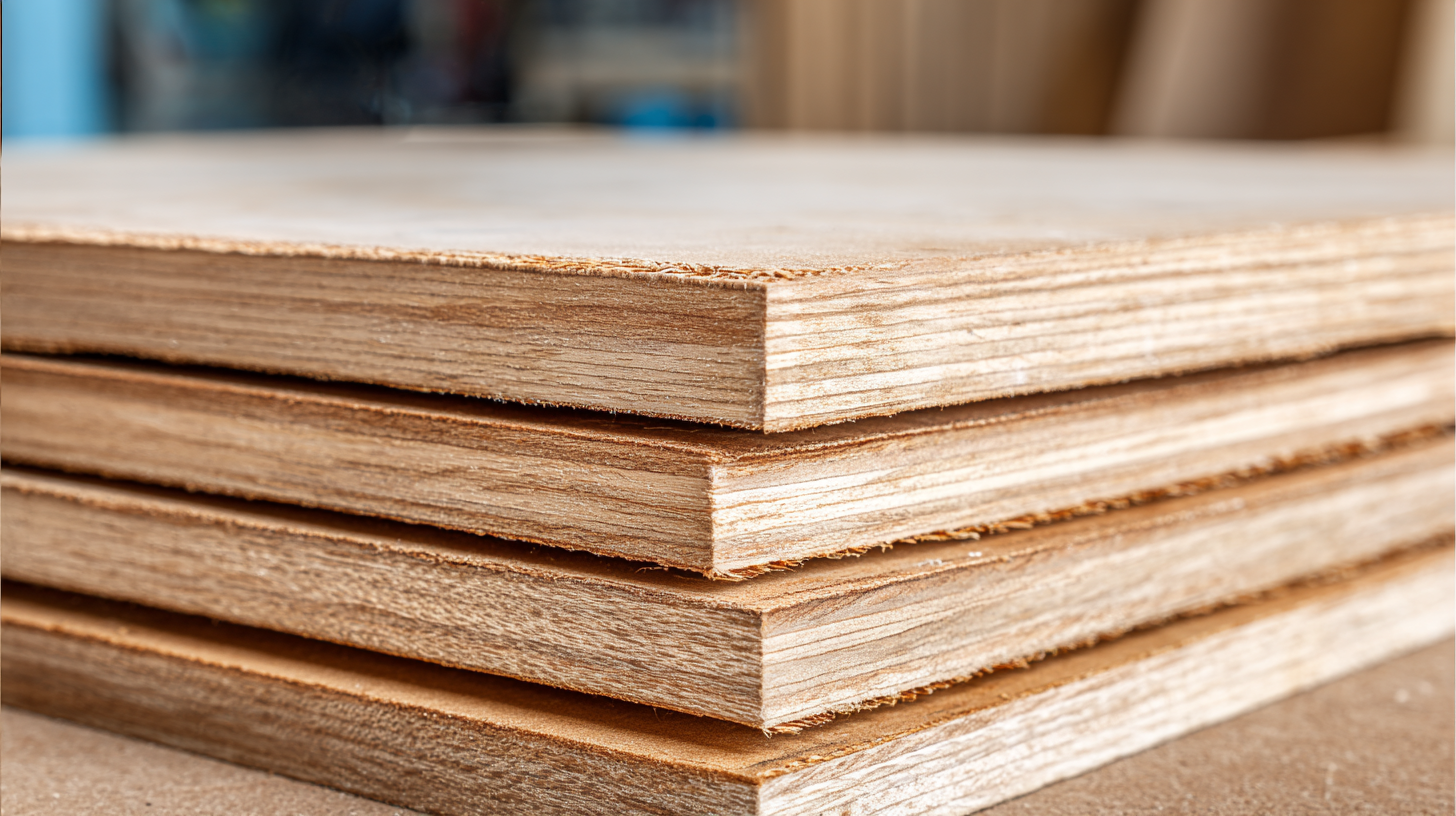
Another important feature to consider is the thickness and number of veneer layers. High-grade marine plywood generally has more layers, which contributes to overall strength and flexibility. The Wood Products Council indicates that the more layers a plywood sheet has, the better its ability to withstand bending and impact forces, crucial for boat construction and repairs. Additionally, look for sheets with minimal voids in the core, as voids can compromise structural integrity and lead to delamination over time.
When selecting marine plywood for your next project, evaluating durability and resistance is crucial, especially for materials intended for wet or humid environments. Marine plywood is specifically designed to withstand the harsh conditions of water exposure, but not all options are created equal. Look for plywood that meets the standards set by the Marine Plywood Standards (BS 1088). This ensures that the product is made with high-quality, waterproof adhesives and is constructed from rot-resistant wood species.
Tips: To ensure maximum durability, consider the grade of the plywood. Higher-grade materials typically have fewer voids and defects, which can lead to improved performance in marine applications. Additionally, check for treatments or coatings that can enhance water resistance. Products with a phenolic film surface can further protect against moisture and physical damages.
Another factor to consider is the type of core used in the plywood. Void-free cores provide superior strength and resilience in aquatic settings. Additionally, ensure that the plywood you choose can withstand not only water but also moisture-induced expansion and contraction. Using quality fasteners and sealants along with the right plywood will significantly extend the life of your project.

When it comes to selecting marine plywood in 2025, understanding the top brands is crucial for ensuring quality and durability in your projects. Leading brands such as Okoume, Meranti, and Marine Boulle are well-known for their excellent resistance to moisture and rot. Each offers unique properties, making them suitable for specific applications. For example, Okoume is lightweight yet strong, making it a favored choice for constructing boat hulls and cabinetry.
Tips for choosing the right marine plywood include assessing the specific needs of your project, such as weight, exposure to water, and desired finish. Always verify the plywood's grade, as higher grades mean fewer defects and better performance. Additionally, inquire about the type of adhesive used in the plywood, as waterproof glue is essential for longevity in marine environments.
Finally, consider sourcing from reputable suppliers who provide detailed product specifications and customer reviews. This not only enhances your understanding of the material but also helps you make an informed decision. By prioritizing quality brands and being mindful of specific project requirements, you can ensure the success of your marine projects in 2025.
| Property | Value | Notes |
|---|---|---|
| Thickness | 3mm, 6mm, 9mm, 12mm | Choose according to project needs |
| Weight | Weight varies by thickness | Consider for transport and handling |
| Water Resistance | High | Essential for marine applications |
| Grade | A, B, C, D | A is the highest quality |
| Price Range | $50 - $120 per sheet | Varies by thickness and grade |
| Usage | Boat building, furniture, marine applications | Versatile material |
When embarking on a project requiring marine plywood, the decision between cost and quality becomes paramount. While it may be tempting to opt for cheaper options to save on immediate expenses, the long-term value often lies in selecting high-quality materials. Marine plywood is specifically designed to withstand moisture and harsh environmental conditions, making it crucial to invest in durable sheets that will resist delamination, warping, and fungal growth. A lower-priced option may initially seem attractive, but the potential for increased repairs or replacements down the line can lead to higher costs overall.
Ultimately, balancing cost and quality involves considering the specific needs of your project. If longevity and performance are integral, investing in premium marine plywood is advisable, as it guarantees better resistance to the elements and extends the life of your construction. However, understanding your budget constraints is also important. Researching reputable brands and comparing the specifications of different plywood options can help you find a solution that meets both your financial and quality needs, ensuring a successful and durable outcome for your next endeavor.


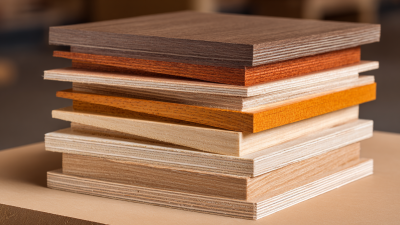
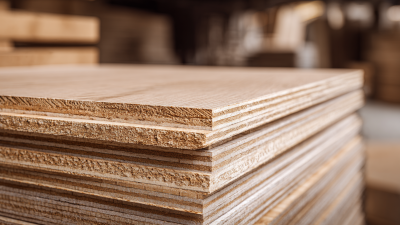
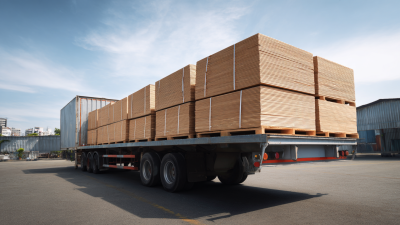
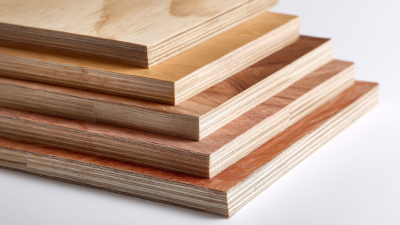

Signup our newsletter to get update information, promotion or insight.